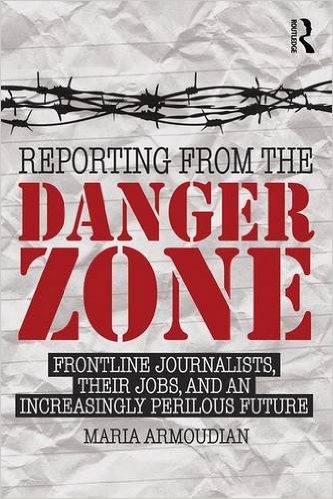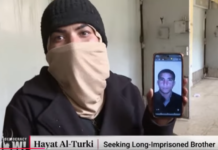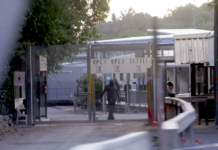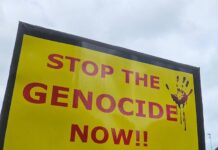War Reporters, a short video launched by Reporters Without Borders (RSF) last year to honour journalists facing “danger zones”. Its release coincided with the publication of RSF’s 50th book in the “100 photos for press freedom” series – this one dedicated to the work of photojournalist Robert Capa.
REVIEW: By David Robie
Media coverage of the decapitation and other atrocities against journalists has heightened global awareness of just how dangerous the profession of journalists is when covering war zones, corruption and human rights violations under dictatorships.
“Although violence against journalists is not a new phenomenon, the trend has worsened,” writes New Zealand-based media academic, political scientist and analyst Maria Armoudian in her new book Reporting from the Danger Zone: Frontline journalists, their jobs, and an increasingly perilous future.
 Researcher Dr Armoudian, lecturer in politics and international relations at the University of Auckland and author of the 2011 book Kill the Messenger, provides sobering statistics in her “danger zone for journalists” analysis.
Researcher Dr Armoudian, lecturer in politics and international relations at the University of Auckland and author of the 2011 book Kill the Messenger, provides sobering statistics in her “danger zone for journalists” analysis.
Since Wall Street Journal’s Daniel Pearl was kidnapped and beheaded by Pakistani extremists in 2002, at least five journalists have been decapitated on the job.
Four years ago, in 2012, Paris-based media freedom advocacy agency Reporters Sans Frontières (RSF) reported a 33 percent rise in journalist killings. This followed the world’s worst single massacre of journalists at Ampatuan on the southern island of Mindanao in the Philippines in November 2009 when at least 34 were killed.
To this day there has been no justice for the families of the victims.
The mounting death toll has been accompanied by a 37 percent rise in abductions (to 119) between 2013 and 2014, writes Armoudian, citing RSF statistics.
The author also summarises other media freedom organisation tallies, noting “hundreds more have been imprisoned of exiled”.
Local journalists bear the brunt
Armoudian goes to great pains to stress that it is the local journalists who bear the brunt of the violence and slayings, “accounting for more than 75 percent of journalists killed or imprisoned, and 90 percent of the abductions.
“The attacks signal a dark era for journalism and a stark departure from previous decades when combatants, at minimum, tolerated journalists, treating them as civilians, and often sought their sympathies.” (p. 1)
What has changed? The social media revolution and the realisation by extremist groups that they no longer need journalists to tell their story.
In fact, making martyrs of journalists make good video footage. They are the “collateral damage” of insurgencies.
This research project was funded by the University of Auckland, which covered a grant from the Faculty Research Fund.
The research for Danger Zone drew largely on interviews with 32 journalists worldwide, including New Zealand’s Jon Stephenson, the country’s only “war correspondent” but nobody from the Asia-Pacific. Twenty four of the journalists agreed to be named in the book while the rest chose to remain anonymous due to the continuing occupational dangers they face.
An Auckland University of Technology journalism graduate, Corazon Miller, now a reporter with The New Zealand Herald (who recently gained a scoop interview with controversial Philippines president Rodrigo Duterte), and a Pacific Media Centre (PMC) associate, also assisted with research and transcripts.
‘Why ethical journalism matters’
Danger Zone has seven chapters with the introduction entitled “Why ethical journalism matters”. The other chapters explore the “origin of stories” (sourcing), the foreign correspondents’ “afflictions”, “staying alive”, “living in a danger zone”, the “first casualty” and a conclusion.
Many of the journalists with long experience recount how difficult and risky the job has become.
Carol Williams, a veteran correspondent who has reported on the break-up of Yugoslavia and the Ukraine conflict, for example, recalls that human rights stories “just happened to occur on my turf”.
She had started off as a foreign correspondent covering nuclear disarmament and the superpower relationship during the Cold War. But she became motivated by witnessing
“some of the most horrible things that were done to children. In Sarajevo, the Serbs would shoot into schools and hospitals. Little six-year-old kids [were] seeing their teachers blown up in front of them …” (p. 21)
Freelance American journalist Dahr Jamail, with little previous journalism experience, was motivated by his “personal outrage”.
“I saw the selling of the [Iraq] War and was completely outraged and decided, ‘Well, I will go in.’ And one thing I can do as a US citizen is go in a report on how this is impacting [on] the Iraqi people because that’s the phase of the story that was totally omitted from the mainstream [media].” (p. 19)
Antidote for hopelessness
Pulitzer Prize-winning journalist Roy Gutman, author of How We Missed the Story, argued that journalism in conflict zones provides change-makers and hope as an antidote for hopelessness.
“Journalism is one of the few means [that] we, maybe the only means, that I certainly had, or that we have as the general public, to expose horrible practices in the hope that somebody will do something about it. And that’s what journalism is all about.” (p. 21)
He exposed Serbian concentration camps and ethnic cleansing “killing fields” in Bosnia … and “that story did have impact, and have a wallop”.
It is pleasing to see Jon Stephenson, the only journalist to take on the NZ Defence Force establishment on a matter of truth and integrity – and win, featuring in this book several times.
In one chapter, Stephenson explains how difficult it is, especially as a freelancer with limited resources available, to get to a remote and dangerous conflict zone. His form of independent “embedding”, if it can be called that, is by becoming immersed with ordinary people, not the elites.
On his first trip to Afghanistan, Stephenson flew to India, took a train to the Pakistani border, and then made a long walk across the harsh countryside into Pakistan via Wagah.
“I just walked across the border … from the moment I arrived in Pakistan, I started collecting info on what the locals felt … on buses, and even in a hotel, I’d talk to the hotel clerk and … I met an MP from the Pakistani parliament. He invited me to his home in Islamabad. I interviewed the Saudi ambassador to Pakistan who I met on the roof of the Marriott being interviewed by CNN. And I just started there really and worked my way up.” (p. 110)
Stephenson met the family of Abdul Haq, one of the major resistance leaders during the so-called jihad against the Soviets, and ended up in a family compound in Peshawar with some other journalists.
Notable omissions
As well as the analysis, Danger Zone provides some “helpful resources” for journalists. However, while useful, including some key links such as the Dart Centre for Journalism and Trauma, there are notable omissions, such as Reporters Sans Frontières/Reporters Without Borders (RSF), which runs an extensive safety programme for freelance journalists in particular. This is a curious oversight because RSF is mentioned in many citations.
Pacific Media Centre, which has been the most active unit on this issue in New Zealand with a Pacific Media Watch freedom project dating back to 1996, and is associated with RSF is also not listed. This is strange given the fact that Danger Zone originated in Auckland and that the PMC, based at the neighbouring university, has produced several publications on conflict and peace journalism.
There is also no mention of the world’s worst atrocity against journalists, the Ampatuan massacre in the Philippines.
However, these are relatively minor criticisms. Essentially this book is inspirational for a new generation of journalists in a troubled era for journalism and a helpful resource for media school libraries.
It is also encouraging that all the interviewees for this project “expressed compassion and empathy for victims of violence, abuse, and failed institutions, and most were vicariously traumatised as a result”. Ethical journalism is alive and defiant in the face of mounting pressures.
But, warns Dr Armoudian, far more work is needed from scholars, international media law experts, “and journalists themselves”, in developing safer ways to secure vital information for democracies.
Reporting from the Danger Zone: Frontline journalists, their jobs, and an increasingly perilous future, by Maria Armoudian. New York and London: Routledge, 2017. 155pp. ISBN 978-1-138-84005-8
References:
Armoudian, Maria (2011). Kill The Messenger: The media’s role in the fate of the world. New York: Prometheus Books.
Gutman, Roy. (2008). How We Missed the Story: Osama Bin Laden, the Taliban, and the hijacking of Afghanistan. Washington, DC: United States Institute of Peace Press.
Professor David Robie is director of the Pacific Media Centre at Auckland University of Technology.












































